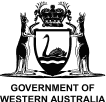Photo Credit: Delphine Chabanne.
Westport has partnered with the Western Australian Marine Science Institution (WAMSI) to deliver the $13.5 million WAMSI-Westport Marine Science Program. This 3-year program is developing the latest data, information and modelling on the complex environmental systems and community values associated with Cockburn Sound.
Project 8.3: Dolphin distribution habitat
Project theme: Apex predators and iconic species
Researchers: D Chabanne
Publication date: December 2023
Mapping the distribution of the bottlenose dolphins
The Indo-Pacific bottlenose dolphins are well-loved locals, and a protected species.
They live in communities, with separate groups identified in Cockburn Sound, Owen Anchorage, and the Swan River. However, they face several threats from habitat loss, entanglement with fishing, and high mortality rates.
This study was commissioned to develop a better understanding of the current number and distribution of the dolphins in Cockburn Sound and Owen Anchorage, as well as their patterns of movement within the area.
Data taken from boats surveys between 2011 and 2015 was used as the baseline for the modelling, with 72 surveys undertaken in Cockburn Sound and 73 in Owen Anchorage during that period.
This data will be supplemented and validated by new surveys to monitor the populations and their movement over the course of a year. This work will be reported in a subsequent WWMSP report on the preliminary modelling and mapping of dolphin distributions.
The research was commissioned to support the Westport project, to understand potential impacts of the port development on the local dolphin community and improve the scientific knowledge available around dolphin habitat and distribution.
What the report found:
- It’s estimated there are 65 dolphins in Cockburn Sound, 45 in Owen Anchorage and 16 in the Swan Canning Riverpark.
- Owen Anchorage dolphins stay relatively close to the shoreline and boat ramps, with seasonal shifts in response to surface sea temperature and water visibility.
- Cockburn Sound dolphins seek shallower waters, across a range of locations in the Sound including the northern and southern tip of Garden Island, and Kwinana Shelf.
- Seagrass beds were key foraging grounds for the Cockburn Sound dolphins.
- Owen Anchorage has experienced high usage and long-term dredging which suggests that dolphins in this region have become accustomed to vessel traffic and industrial operations. This is the same for the dolphins in the Fremantle Inner Harbour.
- The accumulation of multiple activities and increased shipping could trigger behavioural responses, which requires ongoing research and monitoring.
The review recommended further research and dedicated studies to be conducted in both Owen Anchorage and Cockburn Sound, as part of the next phase of WWMSP work.
This will enable a fuller understanding of the potential effects of construction-related activities, vessel traffic, impacts of underwater noise and environmental changes on the behaviour, health, and population dynamics of dolphins that use the areas.
You can read the full report here.





